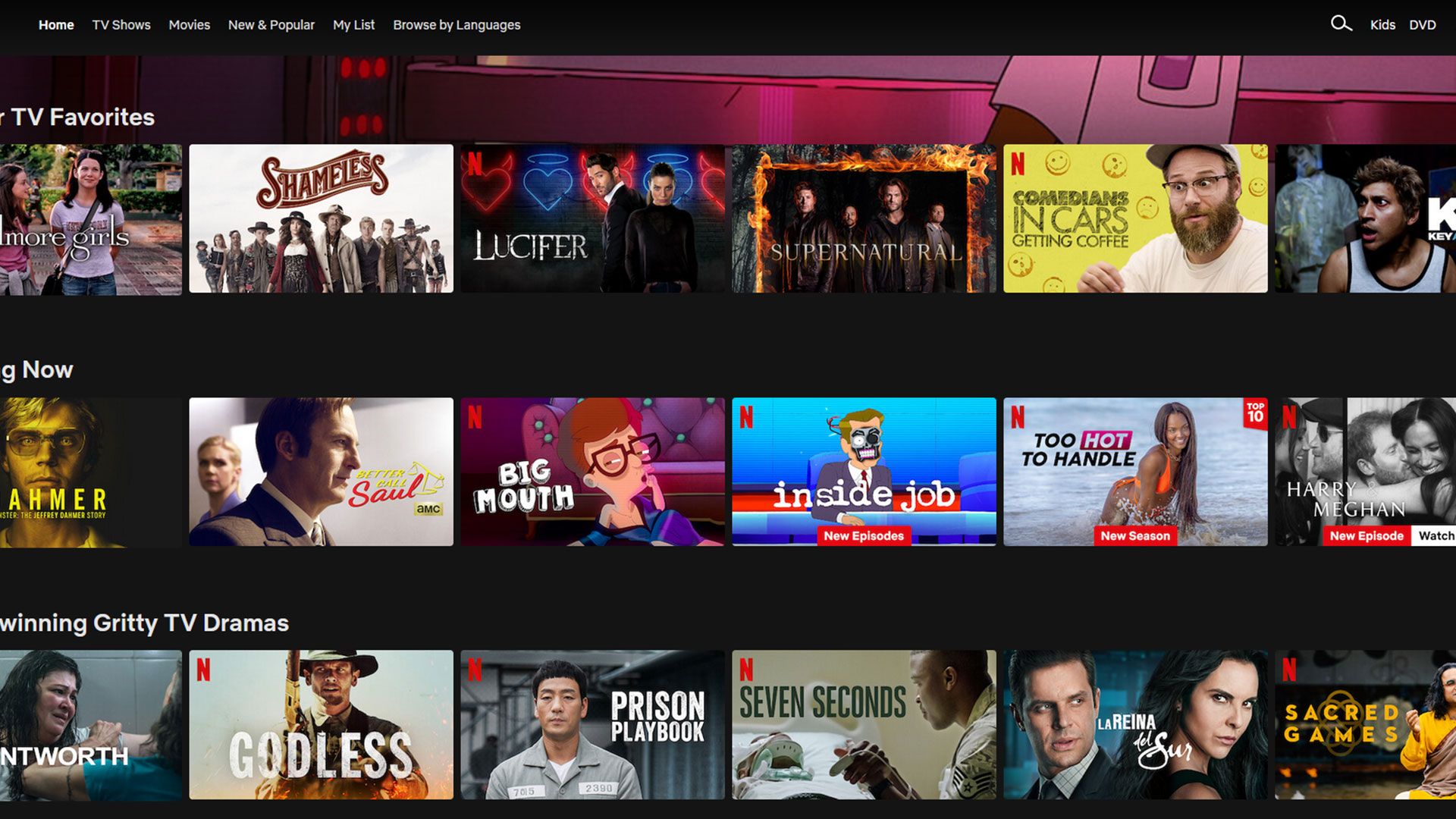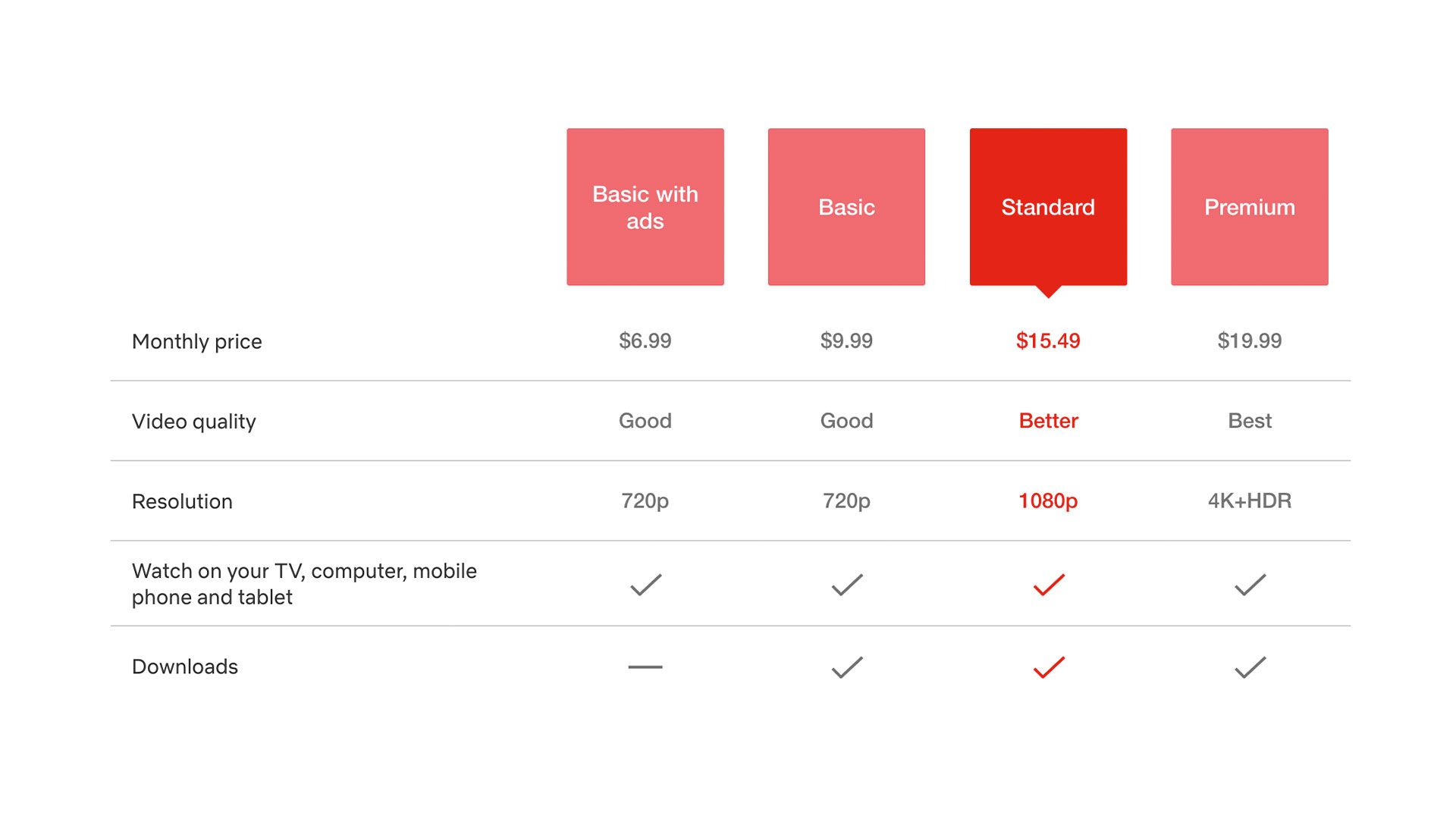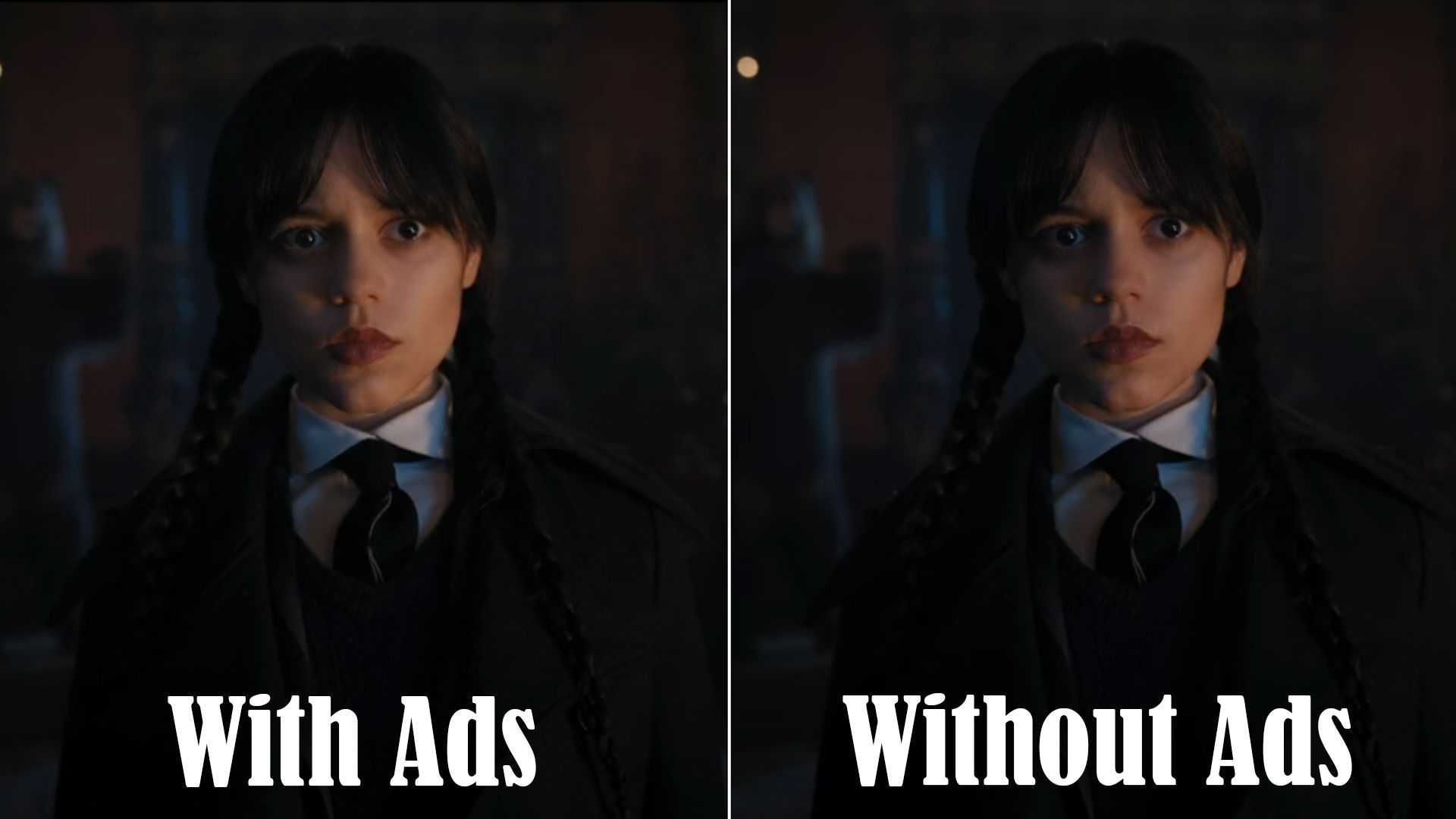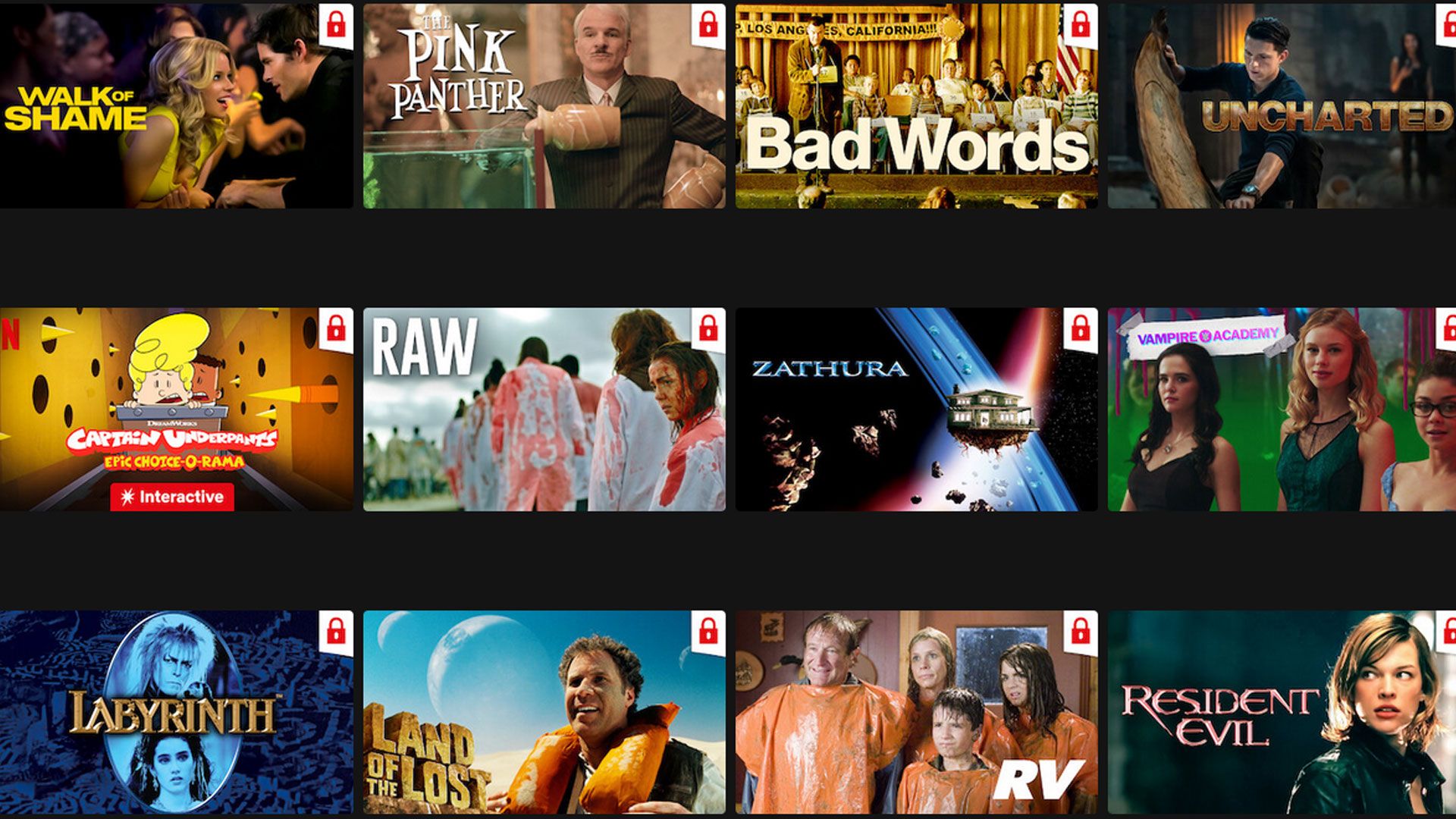Quick Links
With the rising costs of streaming services, we're constantly looking for cheaper options. Netflix aimed to right some of its price increases with a reduced-cost Basic with ads plan, but it's possible the streaming conglomerate was a little too overzealous with how many ads it runs.
In 2007, Netflix integrated streaming into its consumer offerings and, at around the same time, actually lowered its monthly fee for its physical media distribution and limited streaming option. Three years later, Netflix created a standalone streaming tier for $7.99 per month, and as its content library grew, so, too, did the cost. Thirteen years after the streaming-only package dropped, some of us are paying upwards of $19.99 for Ultra HD premium picture quality or $15.49 for standard definition. A $7.50 price hike in over a decade may not sound terrible, but when you consider all of the different streaming services we're now subscribed to, such as Hulu, HBO Max, Amazon Prime Video, and more, it's a considerable hit. So, to mitigate the higher prices of today, Netflix rolled out a Basic option with unskippable advertising. At a low $6.99 per month, this tier has a more limited library, 720p resolution, and ads interspersed throughout programming.
At first, the trade-off of ads for a lower price sounds reasonable. Then you start to realize that, like most modern programming, there is no natural commercial break in Netflix's productions. You could be in the middle of a tense firefight or at the cusp of something incredibly dramatic, then suddenly be sucked out of the moment by the tonal shift of a Budweiser ad. And with how frequently ads can run, it really changes the viewing experience.
Are the Savings Worth Your Time?
It may seem overdramatic to question whether the added time per episode is worth the lower cost, but you're not sitting through one ten-second ad or even have the option to skip after a few seconds a la YouTube. Ad breaks can last up to 75 seconds, and for just about anything over 30 minutes, there are two to three mandated breaks. They also pop up suddenly in the middle of the show or movie because Netflix Originals weren't filmed with commercials in mind. Standard TV programming has designated spots for segues into a commercial for a natural flow; that's simply not the case for most streaming service content.
I first watched Stranger Things, where the average length of an episode during season one was around 50 minutes. During each episode, Netflix ran 2 to 4 awkwardly placed 60- to 75-second ad breaks, and that's after the 30-second advertisement that starts each episode. When I switched to Wednesday, I felt the pain of the more aggressive advertising, which favored three 75-second ads per episode more frequently than during Stranger Things.
Those numbers may not seem too drastic, but spread out over an eight-episode season, that's an extra 30 minutes added to your Netflix watch time. So, if you plan on binge-watching a show like Stranger Things, which has 34 episodes at the time of this review, expect to tack on over 1.5 hours of ads alone. It gets even worse when you want to watch a movie like It (2017). The already brutal runtime of 2 hours and 15 minutes was compounded by 8 commercial breaks that added an additional 10 minutes to the movie.
There are two merits I can give to this ad-laden version of Netflix. The first is that I didn't recall seeing any duplicate commercials. It's not a massive perk, but not seeing the same commercial over and over again is a plus. The second is that not every show will have ads. Shorter programming like Comedians in Cars Getting Coffee along with shows like Breaking Bad and Better Call Saul were completely ad-free.
Full and Ultra HD Are Worthy Sacrifices
Along with relatively frequent ads, Netflix's lowest tier plan also drops the quality from 4K with HDR or 1080p down to an antiquated 720p. It's 2022, and the concept of anything but 1080p streaming will horrify some, but the overall video quality isn't awful. It's definitely noticeable, especially if you're used to viewing all of your media in 1080p and above. The coloring is slightly less distinguished, and some things may lack depth and quality, but it gets the job done.
You'll notice the dip in visual quality in shows like 1899, Stranger Things, Wednesday, and anything where the aesthetic is rather important. If you're sitting around catching up on Shameless or Cobra Kai, 720p isn't going to hinder your viewing experience. In fact, dropping to 720p is a more acceptable sacrifice for the monthly savings than the advertising.
I tested the lower-quality plan on 25 and 27-inch monitors and didn't walk away completely hating what I saw. I think, to some degree, there's too much emphasis placed on the importance of Full and Ultra HD in casual viewing. There are some movies and TV shows you simply want the clearest picture for, but I think Netflix's library is a little lacking in those.
No Real Loss of Programming
One of the bigger catches with Netflix's Basic with ads plan is that not every TV show and movie in the company's library is available. Due to complex legalese, Netflix can't run ads on all shows and movies, so they're locked out of the Basic with ads plan. When I heard that there was a limited library, I figured this would be where Netflix really stuck it to the low-paying customers. However, many of the locked shows were so random that you'd likely not notice them or would shrug it off and watch something else.
Scary Stories to Tell in the Dark and Bullet Train were the first noticeable movies I couldn't watch on this plan, and the latter was the only thing I felt I was missing out on. There were a few more scattered among the many categories, including Sniper: Rogue Mission and Ouija: Origin of Evil, but I had to dig for them. I expected major Netflix originals like Stranger Things and Wednesday to be locked to the lowest-tier plan. Surprisingly, the streaming service remained kind and didn't hide any of its original shows and movies behind the paywall.
The biggest inconvenience is that you can't filter locked programming from your search, so the occasional icon will pop up to tease you. It's not a big downfall, considering that compared to the entire Netflix library, there aren't that many locked movies or TV shows. I tried to find a pattern, expecting primarily mature-rated programming to be blocked, but there is quite the diversity in media on the Basic with ads "no watch list." Seeing a movie like Uncharted up there with Sing 2 and Resident Evil made it tough to determine the criteria for exclusion.
Frequently Asked Questions
How many ads run per program?
-
The shows and movies that feature ads run 2 to 3 ad breaks throughout the runtime. These can last up to 75 seconds. They'll also begin with a 30-second ad before the show starts. Netflix says there will be an "average of 4 to 5 minutes of ads per hour."
Do all shows and movies have ads?
+
No, not all shows run ads. Some, like Breaking Bad, won't run any ads throughout the entire episode. The majority of films and TV-show episodes over 30 minutes long will stop for ads, though.
Are Netflix Originals excluded from the Basic with ads plan?
+
Netflix Originals like Wednesday and Stranger Things will not be excluded from the Basic with ads plan. You can still watch them, albeit with ad breaks throughout the episode.
Can you watch in 1080p with Netflix's Basic with ads plan?
+
Unfortunately, no. Netflix locks the quality to 720p on the Basic with ads plan. This may not hinder your viewing experience for casual TV shows, but it will likely take away from the ambiance of full-length visual masterpiece movies.
Should You Subscribe to Netflix's Basic With Ads Plan?
I really thought I wouldn't even hesitate on being deadset against Netflix's Basic with ads plan, but some perks come along with the $3+ per month savings. Having at least a minute-long break every 10 minutes in the middle of an hour-long program can get annoying, but I will give credit where it's due. Movies seem less frequently brutalized by advertising. Most did have a 30-second starter ad, but of the dozen I booted up, only 3 had mid-media ads. Unfortunately, those three ran about 10 minutes longer because of the ads.
The advertising is the biggest pain point of this basic option. I wasn't put off by the 720p resolution, though if you're into high-fidelity visuals and rely on it for your viewing experience, you may be. It's a small dip in quality, but definitely not impossible to notice. The streaming itself was as smooth as the premium plan, it's just a variation in color brightness and overall image quality that, if you get used to it, isn't all that problematic.
Even the limited library was surprisingly not an issue. Of course, this may be different if you actually want to watch inaccessible media. I venture most new movie releases and certain production companies will be excluded the most, but there didn't seem to be any noticeable rhyme or reason for which movies and shows were cut from the Basic plan with ads.
One issue you may encounter that might not be your first concern is the number of devices that can use the account simultaneously. With the Premium plan, up to four supported devices can watch at once. The Standard plan halves that to two, which is then halved again to only one device on the Basic plans, which could make both the Basic and Basic with ads plans impractical for a larger household. It's a specific concern, but consider it when deciding whether this plan is right for you.
I have no plans of sticking with it, primarily because I can't stand the number or length of the ads. You're only saving $3 per month ($36 per year) from the Basic plan, and for it, I feel the advertising could have been toned down and more viewer-friendly.

Netflix Basic with Ads
- 720p isn't all that jarring
- Locked content is relatively scarce
- Ads don't run for every show and movie
- Ad runtime can add up
- Price may not be low enough to justify the number of ads
- You may miss out on some of the locked content




